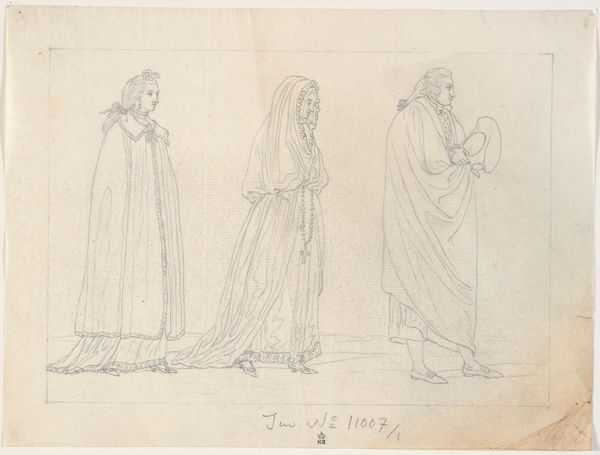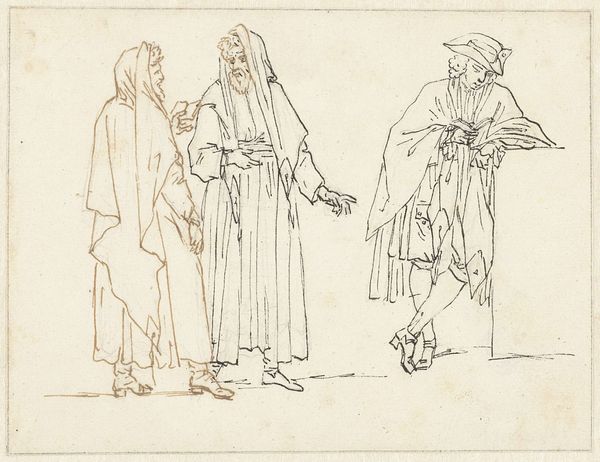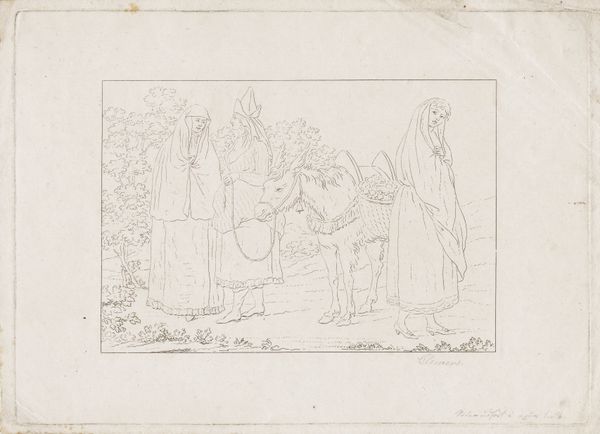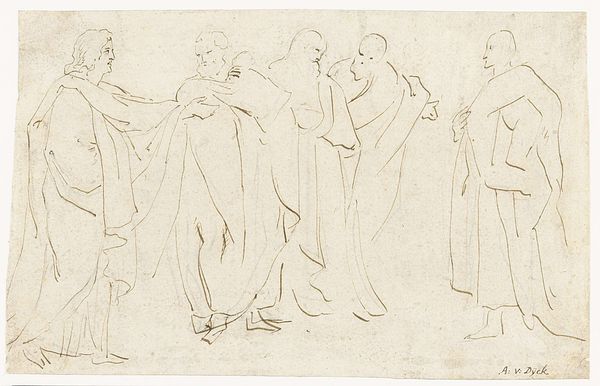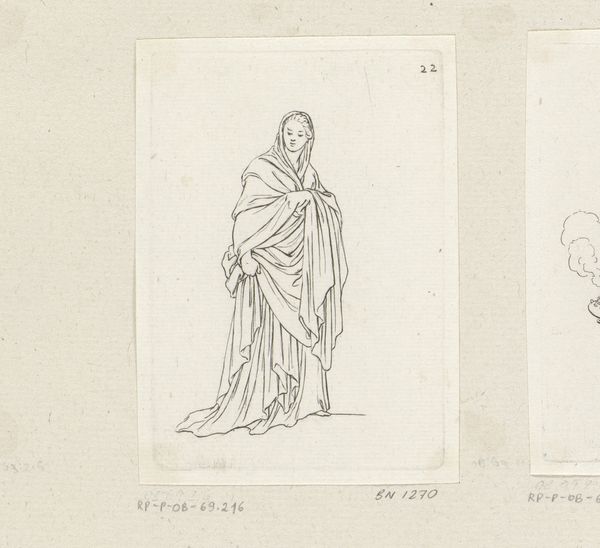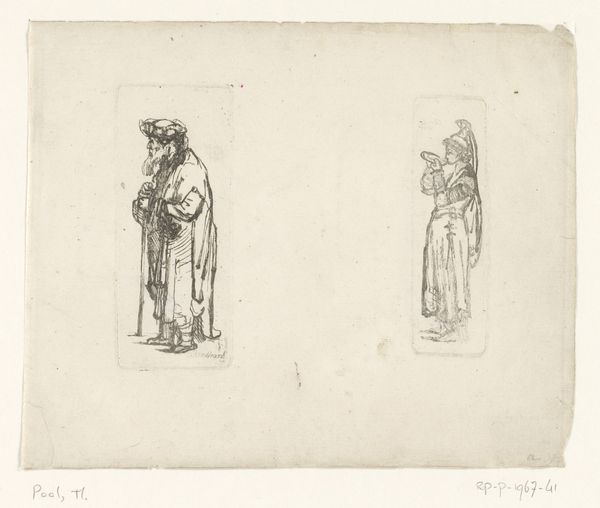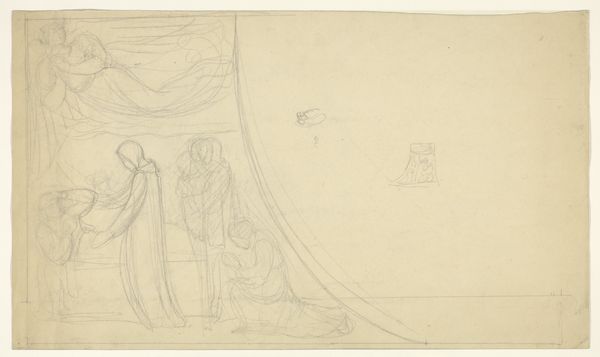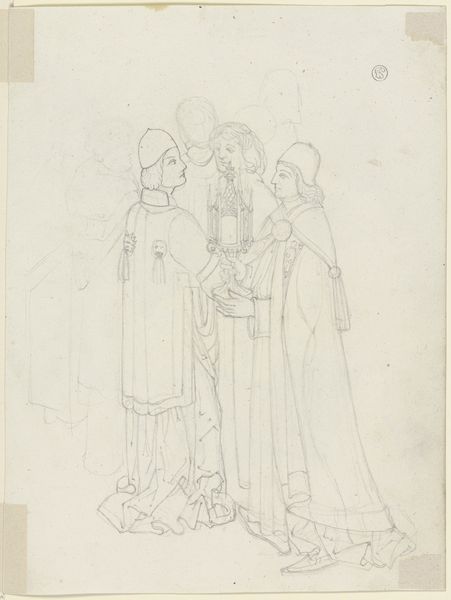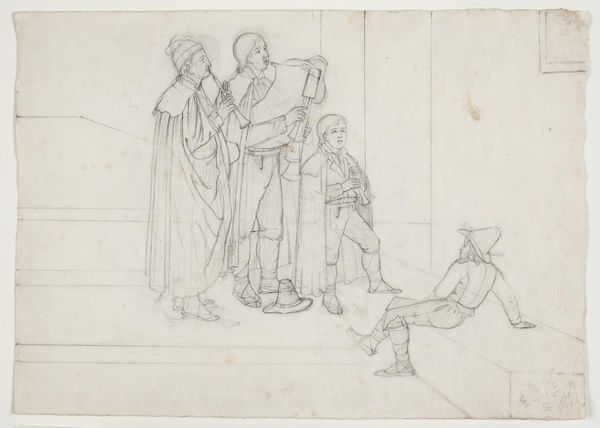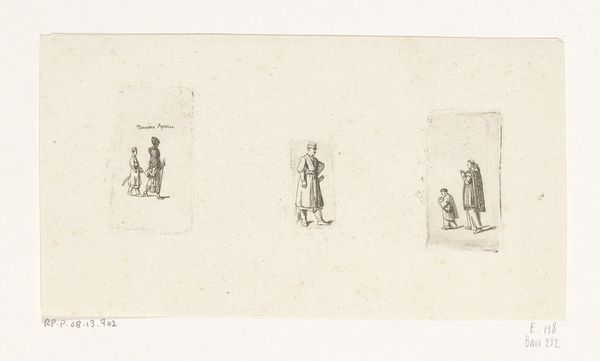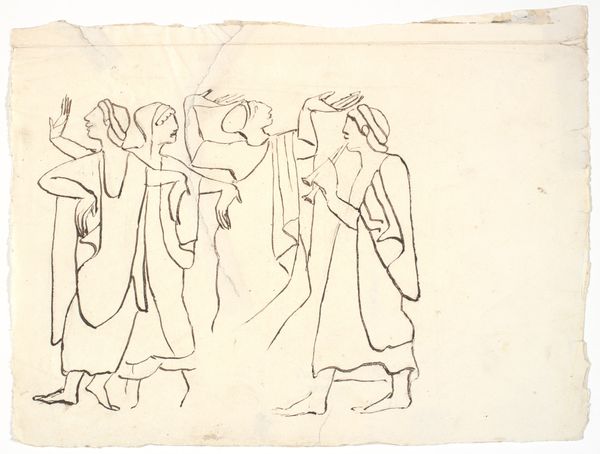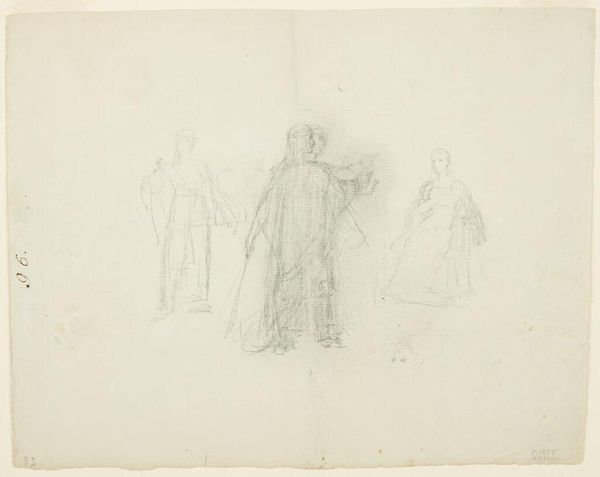
drawing, print, etching, paper, ink
#
portrait
#
drawing
# print
#
etching
#
figuration
#
paper
#
ink
#
romanticism
#
line
#
genre-painting
Dimensions: 214 mm (height) x 290 mm (width) (bladmaal), 201 mm (height) x 273 mm (width) (plademaal), 130 mm (height) x 187 mm (width) (billedmaal)
Curator: This is an etching, ink and graphite on paper created by J.F. Clemens between 1748 and 1831, titled "Illustration efter Murphy: \"Travels in Portugal\"". It's currently held at the SMK, Statens Museum for Kunst. Editor: My initial reaction is drawn to the understated elegance, it is so linear with minimal shading but so detailed. What mood do you think the artwork is creating here? Curator: Given that it’s an illustration after Murphy's "Travels in Portugal", it evokes an air of the romantic and the exotic that informed a lot of European understanding of other cultures at the time. We need to understand travel writing and art production within a system of colonial desires and expectations. Editor: Right. These aren't objective portraits, they are curated representations that speak volumes about the culture making them. What aspects of composition would you want listeners to be aware of? Curator: Look at the way that social status is indicated through dress: these carefully-placed figures are clearly demarcated in terms of gender and social standing. The gazes tell you a lot about the status of each character, too. It serves to reinforce an orientalist narrative in a manner consistent with the expectations of European audiences, doesn't it? Editor: Absolutely, yes, although the subtle line work and delicate detail of the etching make them all appear so very dignified, but yes it does feed into the trope of the time of seeing other cultures through a western lens, exoticised in some respects but refined by way of portraiture too. Curator: This piece gives us a potent lens for exploring power relations of the time through dress, gaze, and pose. We should consider who gets to represent whom, and what’s at stake in those portrayals. Editor: Indeed, the form gives a window into a certain mind at the time but looking closer allows us to study beyond that initial image of the piece. There’s definitely much more than meets the eye here in this wonderful study of Portugal and its inhabitants in the 18th century!
Comments
No comments
Be the first to comment and join the conversation on the ultimate creative platform.
